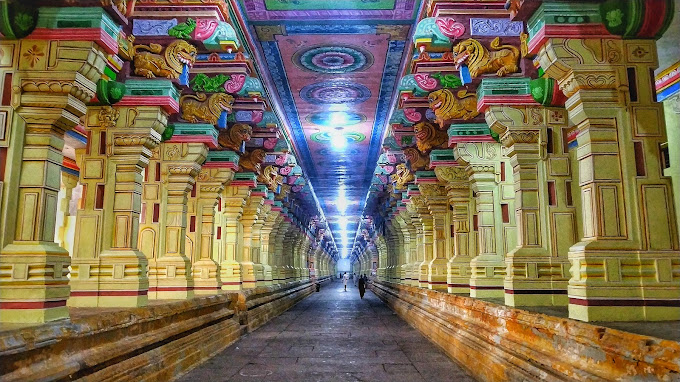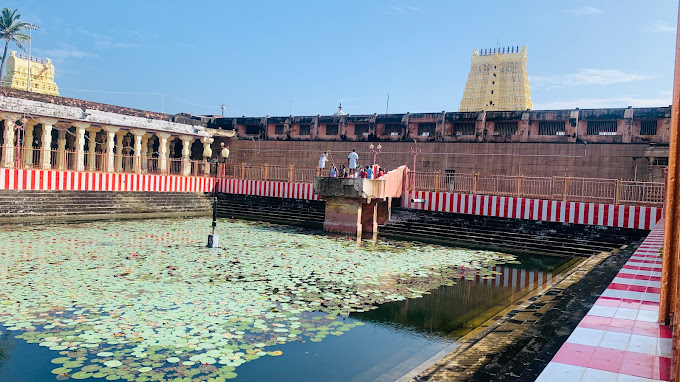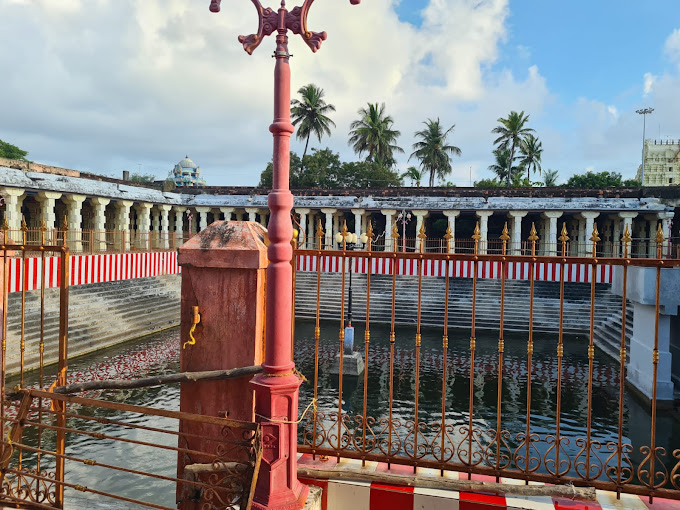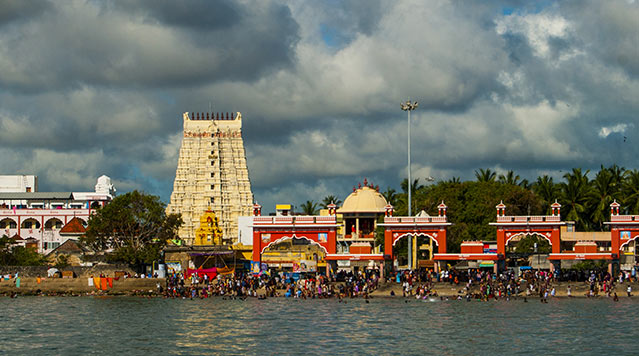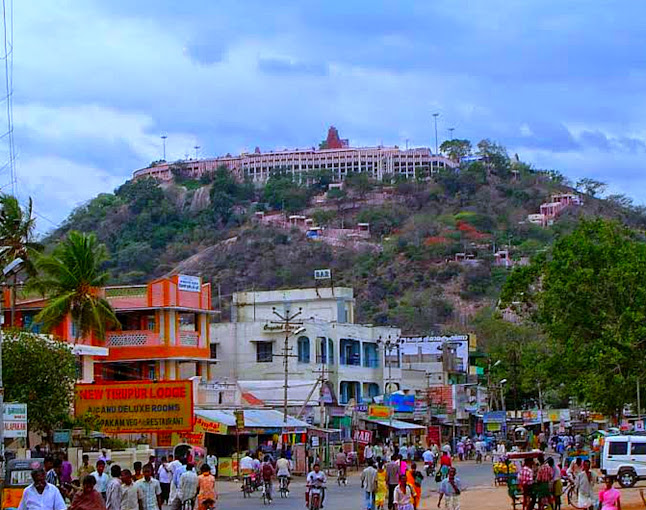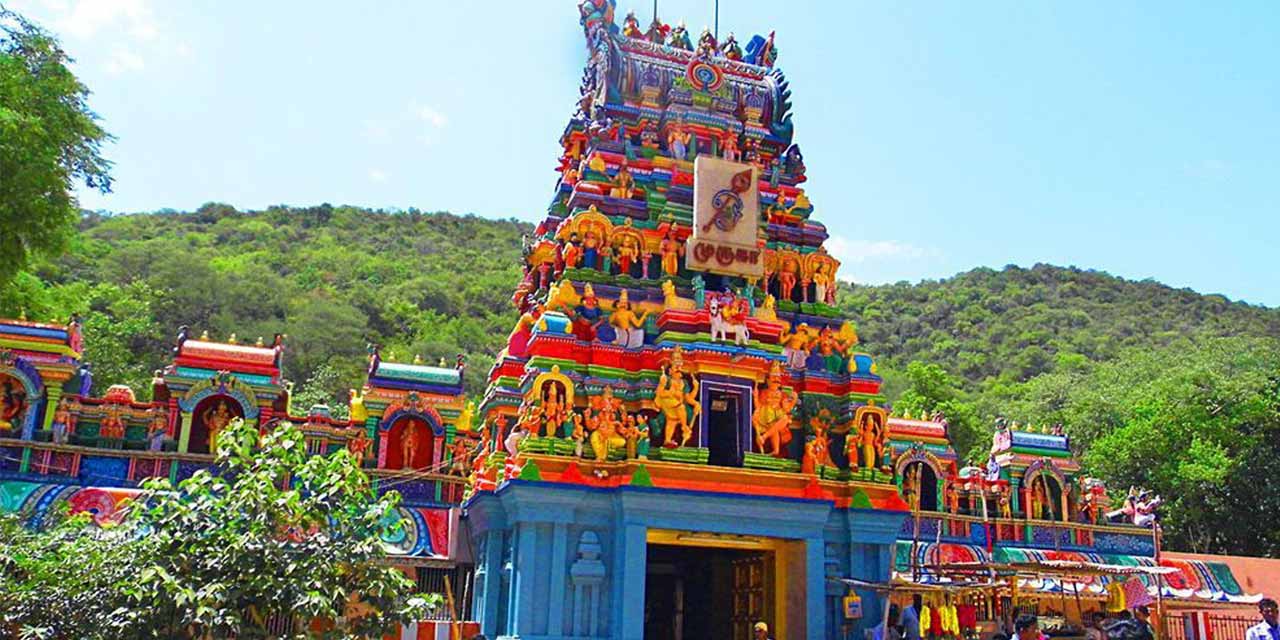Nestled on the sacred shores of Rameswaram island in Tamil Nadu, the Ramanathaswamy Temple stands as a testament to Hindu spirituality and architectural grandeur. Dedicated to the revered deity Shiva, this temple holds a special place in the hearts of devotees from far and wide.
Legend has it that the Lingam of Ramanathaswamy was consecrated by none other than Lord Rama himself, before embarking on his epic journey to Lanka. This divine connection lends the temple its revered status as one of the twelve Jyotirlinga temples and a Char Dham pilgrimage site.
Over the centuries, the temple has been a beacon of faith, drawing devotees and pilgrims seeking solace and blessings. The hallowed halls echo with the hymns of Saivite saints like Appar, Sundarar, and Tirugnana Sambandar, who have extolled its virtues through their songs.
The temple’s architectural splendor is evident in its expansive corridors, the longest among all Hindu temples in India. Built by the illustrious King Muthuramalinga Sethupathiy and expanded during the 12th century by the Pandya Dynasty, its towering gopurams and intricate carvings stand as a testament to the craftsmanship of bygone eras.
Today, the Ramanathaswamy Temple continues to inspire awe and reverence among Shaivites, Vaishnavites, and Smarthas alike. Its sacred precincts offer a sanctuary for spiritual seekers, while its rituals and festivals celebrate the rich tapestry of Hindu traditions.
As you step into the sanctum of the Ramanathaswamy Temple, prepare to be enveloped in an aura of divinity and devotion. Here, amidst the gentle lapping of the waves and the scent of incense, you’ll discover a timeless connection to the divine that transcends the boundaries of time and space. Welcome to a journey of faith and enlightenment at the Ramanathaswamy Temple, where every step brings you closer to the eternal embrace of Shiva.
Ramanathaswamy Temple: A Shrine of Redemption
In the sacred annals of Hindu mythology, the Ramanathaswamy Temple in Rameswaram holds a profound significance as a place of absolution and divine grace. Legend has it that Rama, the seventh avatar of Vishnu, sought forgiveness for any transgressions committed during his battle against the demon-king Ravana in Sri Lanka.
According to the Puranas, Rama, along with his consort Sita and loyal brother Lakshmana, embarked on a journey to seek pardon for the sin of Brahmahatya, the killing of a Brahmin, which occurred during the conflict with Ravana. Following the counsel of sages, Rama prayed fervently to Shiva, the supreme deity, to cleanse his soul of this grave offense.
In his devotion, Rama instructed his trusted companion Hanuman, believed to be an avatar of Shiva himself, to bring a lingam from the Himalayas for worship. However, as the lingam took longer to arrive, Sita fashioned one out of sand from the nearby seashore, symbolizing purity and impermanence.
This poignant tale, immortalized in the Ramayana, speaks of Sita’s unwavering faith and Rama’s quest for redemption. It is said that the lingam installed by Sita herself still resides within the sanctum of the temple, a testament to her devotion and the enduring bond between humanity and the divine.
Another version of the story suggests that Rama established the lingam even before constructing the bridge to Lanka, as a mark of gratitude for Shiva’s blessings. Regardless of the narrative, the essence remains the same – the Ramanathaswamy Temple stands as a beacon of hope and forgiveness, offering solace to all who seek spiritual renewal.
As you stand amidst the hallowed precincts of this ancient shrine, may you be inspired by the timeless tale of Rama’s penance and Sita’s devotion. Here, amid the rhythmic chants and sacred rituals, let go of your burdens and embrace the divine grace that flows eternally from the heart of Shiva. Welcome to the Ramanathaswamy Temple, where every prayer is a step closer to redemption.
Experience the sublime beauty and divine aura of Ramanathaswamy Temple in this captivating YouTube video:
Gallery Of Ramanathaswamy Temple:
